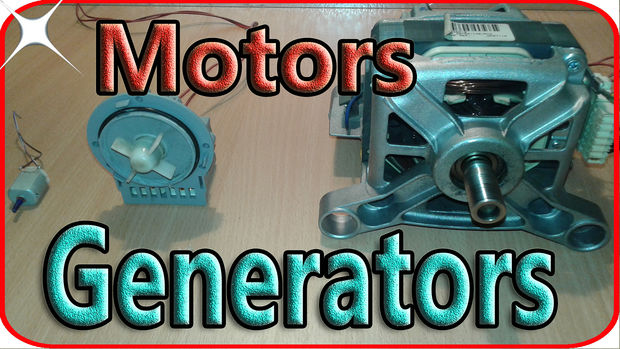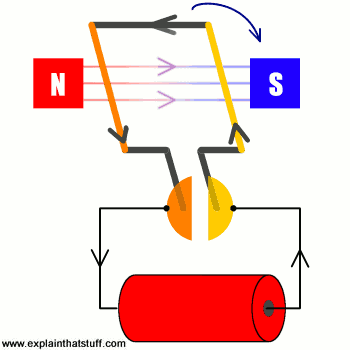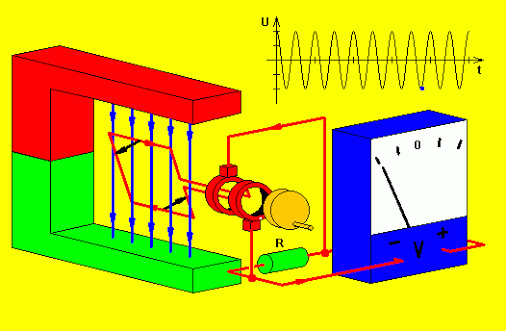Conservation of energy
If a stick of dynamite explodes, its pieces shatters every where , in addition sound and heat also heard and produced. The kinetic energy of the pieces, sound energy and heat energy;where does it comes from? What was inside that dynamite stick which did this? Are these energies generated? The answer is "No", energy is not generated, it is basically conversion of energy, when the stick of dynamite explodes the energy converted from chemical potential energy resides inside the dynamite stick to kinetic energy, sound energy and heat energy. So conclusion is " Energy can neither be created nor destroyed but it can be transformed from one form to another. Total energy always remains conserved."

image credits
Few more examples can make this more clear,
In generators do we generate energy? keeping in mind that energy can neither be created nor destroyed. The answer is again "No", we do not generate energy in generators, though the name generator is somehow misleading. The energy conversion happens in generator. We give fuel to the engine connected with the generator, due to the combustion of fuel heat is produced which is converted into mechanical energy which finally converts into electrical energy due to a phenomena called electromagnetic induction(neglecting the by products ).The conversion of energies in above example is as follows:
Fuel ( Chemical potential energy)
↓
{combustion}
↓
heat
↓
Heat loss←{engine}→ Sound
↓
mechanical energy
↓
Heat←←←{generator}→→Sound
↓
electrical energy
So we can say that, It is not possibe to have electrical energy from a generator without giving it mechanical energy. It is all about energy conversion not about energy generation.

image credits
Lets move to another example, an electric motor, it converts electrical energy into mehanical energy, where does it take electrical energy? Assume in this case, it takes electrical energy from generator.
Mehanical energy
↓
Heat loss←{Generator}→Sound
↓
Electrical energy
↓
Heat loss←{Electric motor}→ Sound
↓
mechanical energy
So we can say that It is not possible to have mechanical energy from an electric motor without giving it electrical energy.
The conclusion of the above discussion is that to have an output one must give an input. One more thing which can be concluded from the above examples is that generator and motor works opposite to each other. The input of generator is the output of an electric motor and vice versa. Generators and motors have many things in common because they have same general construction. Generators experience motor effect while running where as electric motors experience generator effect while running. This is really interesting, and the most interesting part is that, it is the motor effect in generators which confirms conservation of energy and it is the generator effect in electric motors which confirms conservation of energy. To understand these things, we have to understand working principles of generator and electric motor.
According to faraday's law of electromagnetic induction whenever conductor is placed in a time varying magnetic field or a conductor moves with some vertical component of velocity relative to magnetic field, emf (electromotive force) induces in it. If a conductor is provided a closed path, the induced current will flow. This phenomena is called electromagnetic induction.
Suppose a magnet moves towards a coil made up of copper wire loops, during the forward motion magnetic field changes relative to the coil or we can say that there will be rate of change of magnetic flux. Emf will be induced in the coil and closed path allows to flow current through it called induced current. The story doesn't end here, don't you think that current flowing through the coil will establish a magnetic field of the coil, the north pole of the coil will be infront of the north pole of external magnet which resist the motion of magnet towards the coil.

image credits
Now consider the motion of the magnet away from the coil, due to the reversed motion of magnet everything will be reversed i.e direction of induced current and the magnetic field of the coil. This time south pole will be established in front of the north pole of the magnet. Thus the coil's induced magnetic field will resist the away motion of the magnet from the coil.

image credits
The conclusion of above discussion is that the induced magnetic field of the coil will always resist the motion of the external magnet, either forward or backward. This is called Lenz's law. Lenz's law confirms law of conservation of energy because if we consider contrary to above explained mechanism, law of conservation of energy will be voilated. How? Let me explain,
In first case if south pole of the coil was formed instead of a north pole infront of the external magnet which was moving towards the coil, there was no need to push the external magnet towards the coil because in that case external magnet would be automatically attracted by the induced magnetic field of the coil.
In second case if north pole of the coil was formed instead of south pole infront of the external magnet which was moving away from the coil, there was no need to pull the external magnet away from the coil becuase in that case exgernal magnet would be automatically repelled by the induced magnetic field of the coil.
In both cases explained above there was no need to give sufficient input but we are getting output, this is against first and second law of thermodynamics. Laws of conservation of energy prvailed.

image credits
To understand how a simple electric motor works , consider a current carrying loop of wire inside the poles of the magnet in such a way that it can only spin about its central axis. The current flowing through the loop establish the magnetic field of the loop which interats with external magnetic field. In this way loop of the wire starts to rotate.This rotation depends upon many factors but mainly depends upon the angle between plane of the coil and direction of magnetic field. But hold on! A motor is just like a generator running in reverse. When the coil of the motor rotates in the magnetic field by the applied potential difference V, an emf E is induced in it. The induced emf is in such a direction that opposes the potential difference running the motor. Due to this reason the induced emf is called back emf (generator effect ) of the motor. The magnitude of the back emf increases with the speed of the motor. When the motor is just started, back emf is almost zero and hence a large current passes through the coil. As the motor speeds up, the back emf increases and the current becomes smaller and smaller. However, the current is sufficient to provide torque on the coil to drive the load and to overcome losses due to friction.This is exactly, what conservation of energy says. As the output increases input must be increased.
If motor is overloaded, it slows down. Consequently the back emf decreases and allows the motor to draw more current.If the motor is overloaded beyond limits, the current could be so high that it may burn out the motor.

image credits
Finally few words for the motor effect in generators. Practically the generator are not so simple as shown above.The shaft of the turbine is connected with the coil of the generator which rotates in the magnetic field. Due to electromagnetic induction the generator supplies current to the external circuit. The devices in the circuit that consume electrical energy are known as "load". The greater the load, the larger the current is supplied by the generator. When the circuit is open, the generator does not supply electrical energy and a very little force is needed to rotate the coil. As soon as the circuit is closed, a current is drawn through the coil. The magnetic field exert forces which forms a couple on the current carrying coil. These forces are such that they produce a counter torque (motor effect) that opposes the rotational motion of the coil. This effect is sometimes refered as back motor effect in the generator. The larger the current drawn, the greater is the counter torque produced. That means more mechanical energy is required to keep the coil rotating with constant angular speed. This is in agreement with the law of conservation of energy. The energy consumed by the load must come from the energy source used to drive the turbine.
That is all for now. Upvotes , comment & Resteem would be appreciated. Have a nice day!
I strongly disagree. @cheetah,you have gone mad. There is a hell difference ( no match )between my post and the content you pointed out.
The content from this website also help your readers to know more about energy conservation
https://www.sartul.com/fuel-conservation-essay-article-paragraph/